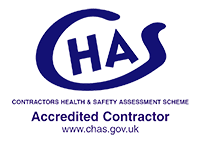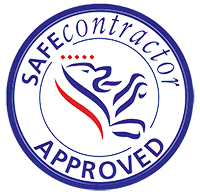Heavy rain, such as that we have seen recently, can cause water to rise to dangerous levels, resulting in flooding. This flooding can cause significant damage to property, and even represent a risk to life. So, how do you protect your property from the risk?
There are actually a number of things you can do but the first step would be to assess how likely your property is to flood given the right circumstances. Those in low lying areas or close to rivers or reservoirs are particularly at risk but properties in other areas are not immune from the issue. You can check the probability using the Long Term Flood Risk Assessment for Locations in England tool online. The risk in your specific location will determine the lengths at which you are prepared to go to shore up your property and the amount of money you’re willing to spend to do that. Even if you’re in a low risk area, it’s worth putting some basic things in place that would afford you some protection in extreme weather.
Here are a few things you can do, ranging from basic good sense to more radical protections for high risk areas:
Your drains are your best friend when it comes to preventing the build-up of excess water, for obvious reasons. Help them do their job by keeping them clear from debris, ensuring that grates are intact (because these protect them from larger objects finding their way in) and being careful about what you put down the sinks or toilets in the house so that you don’t block them (especially fats, wet wipes and even water beads!). If your drains appear clear of visible debris but you find that water does not drain away as it should, there may be an issue further down the pipes and if that’s on your property, you are liable for that. A drainage survey is a good idea in this situation as correlator technology can determine exactly where any blockages or damage to pipes are.
If you are at a higher risk of flooding you may wish to consider having additional drainage installed such as a rain drain near doorways or in patio areas.
Many people choose to replace grassed areas with hardstanding to park cars on or create low maintenance gardens but grass offers really good drainage properties. Try to retain at least some grassed area (artificial grass also drains well and is low maintenance if that’s what you’re looking for) or, if you need to replace with hardstanding, ensure sufficient drainage is built in.
Understanding how water flows and the likely places it will find to enter your home is very useful as you can put things in place to prevent it. Doorways (house doors and garage doors) are obvious points of ingress but so are air bricks and water can even get in via brickwork where the pointing has deteriorated. Identify all these potential vulnerabilities around the property and take measures to secure them. This could be things like repointing brickwork and installing self-sealing air bricks. You can even have flood-proof doors fitted. These are usually supplied by specialist companies and are more expensive than regular doors but may be worth investing in if you’re in a high risk area. The great thing about flood-proof doors is that they look like regular doors and they protect your property at all times so no need to react to an incoming threat.
Of course, your most basic flood protection is old fashioned sandbags, placed at doorways to stem the flow and hopefully prevent water entering. These will offer some protection if you act quickly enough but may not be enough in the event of a heavy flood. You can also place these in strategic positions internally to minimise the area affected should the water breach the external defences. Even if your risk is medium, it may be worth keeping some handy as they are inexpensive to buy.
Despite all your best efforts to protect your home, sometimes it may just not be enough. As well as taking proactive steps to prevent a flood, it’s always a good idea to do things in your home that will minimise the damage. Moving electrical sockets higher up the walls is a good idea to prevent damage to the electrics and hard flooring may incur less damage than carpets downstairs. Obviously water will find the lowest points so cellars are particularly vulnerable. Where possible, store items on racking with legs that raise the level off the floor (this is also good for cellars that are a little damp anyway as can help prevent your items becoming musty). Keep valuable items upstairs if possible, especially important documents, and ideally in a security safe that is rated for flood and fire as well as theft protection.
It goes without saying that you should have appropriate buildings and contents insurance. It’s important that you make sure that you would be covered in the event of a flood as some policies won’t cover for natural disasters or those in high risk areas. If in doubt, speak to your insurer.
If flood warnings are in place for your area, act fast and move as many items upstairs as you can once you’ve secured your external defences. If it’s not possible to move whole items of furniture, perhaps move the contents from cupboards and shelves to a higher position, especially sentimental items that can’t be easily replaced.
Clearly, a flood can be devastating so the more you can do to prevent or minimise the damage, the better (and will always go in your favour with insurers). Weigh up the things you can do against the risks in your specific area but don’t wait until you’ve already had a flood as this could affect your ability to get insurance.
We can help in the area of drainage and that’s something that’s always worth taking care of as blocked drains can cause significant issues, regardless of your risk of flooding. Just give us a call on 0333 577 0151 or complete the form to the right to book a drainage survey.
Complete the form below and one of the Plumbcare.com team will get back to you as soon as possible.






"Great, very good."